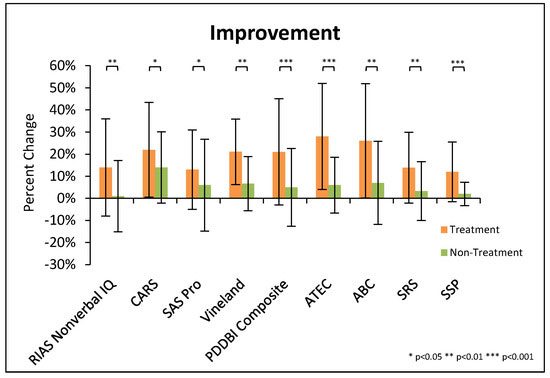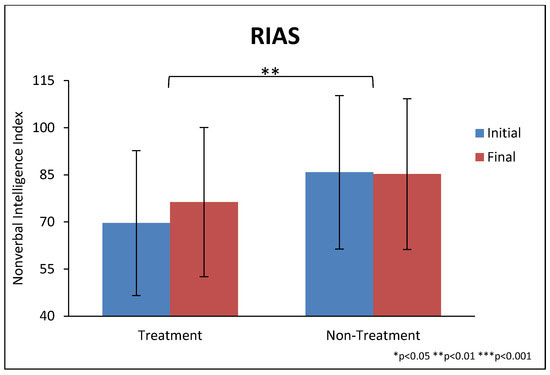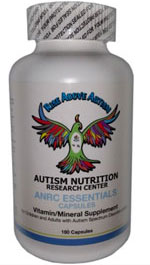A new study by researchers at multiple universities has found that a comprehensive dietary and nutritional regimen is effective at reducing symptoms of autism, increasing functioning level and reducing associated gastrointestinal (GI) problems. The regimen is safe, uses readily available products, and can be implemented by the average family.
Lead investigator James Adams of Arizona State University and colleagues tested a combination of supplementation with vitamins and minerals, essential fatty acids, sulfate through epsom salt baths, carnitine, and digestive enzymes, as well as a “healthy” diet. The creation of the treatment protocol was based on prior research showing effectiveness of each of the components individually. This study was the first to test them as a combined treatment over a period of one year. The goal was to determine if the components together would have an even greater positive effect than that reported for each individually. Another goal was to measure the effects of the diet and nutrition protocol over a longer period of time, as these types of interventions may take longer to show an effect than a standard drug.
The treatment resulted in positive effects across key behavioral and functional measures which are meaningful to the person with autism. Compared to those who did not receive the treatment, the treatment group saw gains in non-verbal IQ, a reduction in the Childhood Autism Rating Scale (CARS-2) and the Severity of Autism Scale (SAS-Pro), both of which measure autism severity and function, and most of the domains and subscales of the Vineland Adaptive Behavior Scale (VABS-II), which measures typical performance on everyday activities reflecting personal and social skills. Other assessments showing gains were scores on the ATEC (Autism Treatment Evaluation Checklist covering Speech/Communication, Sociability, Sensory/Cognitive Awareness, and Health/Physical Behavior), the ABC (Aberrant Behavior Checklist covering Irritability, Lethargy, Stereotopy, Hyperactivity, and Inappropriate Speech), the Social Responsiveness Scale (SRS), and the Short Sensory Profile (SSP covering sensory sensitivity). The results of the key behavioral changes are shown in the chart below. 
Improvements were also observed for the subgroup of participants who had gastrointestinal issues at the start of the study. Among this subgroup, severity scores on the Gastrointestinal Severity Index (6-GSI) decreased significantly in the treatment group compared to the non-treatment group (decline of 30% vs decline of 10%). Improvements were noted primarily in constipation, diarrhea, and stool smell.
Side effects of the protocol were minimal and were limited to a few individuals who had severe nutritional deficiency or GI issues and were more sensitive to the treatments.
The study covered a wide range of ages, from 2 1/2 to 60 years old, with most study subjects being under age 21. Participants had a confirmed diagnosis of Autism Spectrum Disorder (ASD). It included a treatment and a non-treatment comparison group, of 37 and 30 subjects in each group respectively. The sample size selected was based on the ability to detect differences in treatment effects shown by the prior studies on the individual diet/nutrition components. Subjects were assigned randomly to one of the two groups. Some outcome measures were double blinded, meaning the investigators and the family member reporting changes did not know whether the study subject was in the treatment or non-treatment group. Some measures were single-blinded, meaning that the investigator but not the family reporter did not know which treatment group the subject belonged to. Double-blinded measures are considered of higher quality than single-blinded due to the minimization of bias. Single-blind is considered of higher quality than “open-label” or non-blinded studies. Thus the methodology met standards of high quality in key areas: sample size, confirmed diagnosis, treatment group randomization, and blinded evaluations.
Since the double-blinded measure is considered the highest quality approach, it is worthwhile to emphasize the non-verbal IQ test, assessed through the RIAS (Reynolds Intellectual Assessment Scales), which was the one double-blinded evaluation. The CARS-2, SAS-Pro, and Vineland were semi-blinded and the others were unblinded. The results for the non-verbal IQ test are shown in the chart below. The treatment group improved by 10% (score increased from 69.6 at baseline to 76.3 at the 12 month study end), while the non-treatment group’s scores declined by 1% (from 85.8 to 85.3). The study authors note that “the significant improvement on the non-verbal IQ test suggests a substantial improvement in cognitive function”.

 All the interventions used are off-the-shelf products that any family can purchase now, no prescription needed and no waiting for future FDA approval. The vitamin/mineral supplement is available at the Autism Nutrition Research Center. The fatty acids used are produced by Nordic Naturals and available in stores or online (for example, Amazon, Thrive Market, Vitamin Shoppe). The Epsom salt supplementation was achieved through product readily available (e.g., from Walgreens) given in a 20 minute bath 2 times a week. Carnitine is available from most drug stores or supermarkets. While acetyl-L-carnitine was used in the study, the authors suggest that L-carnitine might be a better product as it is better absorbed. The digestive enzymes used are the brand from Houston Enzymes ( or from Amazon).
All the interventions used are off-the-shelf products that any family can purchase now, no prescription needed and no waiting for future FDA approval. The vitamin/mineral supplement is available at the Autism Nutrition Research Center. The fatty acids used are produced by Nordic Naturals and available in stores or online (for example, Amazon, Thrive Market, Vitamin Shoppe). The Epsom salt supplementation was achieved through product readily available (e.g., from Walgreens) given in a 20 minute bath 2 times a week. Carnitine is available from most drug stores or supermarkets. While acetyl-L-carnitine was used in the study, the authors suggest that L-carnitine might be a better product as it is better absorbed. The digestive enzymes used are the brand from Houston Enzymes ( or from Amazon).
The treatment group was asked to adhere to a diet of vegetables and whole fruits, protein, adequate but not excessive calories, minimal junk foods, gluten-, casein- and soy-free foods, and avoidance of artificial flavors, colorings and preservatives. The diet component of the treatment regimen was the most difficult for families to comply with. Infractions often occurred at school or with non-family care providers. Parents interested in implementing a healthy diet like this could utilize The DIET guide from Talk About Curing Autism to help them through the process.
Given the positive results of this study, parents might want to read the full paper which is available for free online, and decide for themselves if they wish to initiate a similar diet and nutrition protocol for their family member with autism.
References
Adams JB, Audhya T, McDonough-Means S, et al. Effect of a vitamin/mineral supplement on children and adults with autism. BMC Pediatrics. 2011;11:111. doi:10.1186/1471-2431-11-111.


